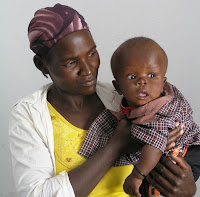March 22, Luanda — The Angolan Health Ministry (MINSA), the US Oil Company "CHEVRON" and Baylor International Pediatric Aids Initiative (BIPAI) from Houston, Texas announce the creation of a sickle cell anemia screening program in the country.
Sickle-cell disease usually presenting in childhood, occurs more commonly in people (or their descendants) from parts of tropical or sub-tropical regions where malaria is or was common. One-third of all indigenous inhabitants of Sub-Saharan Africa carry the gene. Angola has one of the highest rates of infection of falciform anemia (sickle-cell disease) in the world. It is estimated that 10,000 Angolan children are born every years with the disease, which contributes to the aggravation of the death rate of children less than five years of age.
United Nations statistics record that 220 out of every 1000 Angolan children in the country are born with sickle cells anemia and die before reaching five years of age. Sickle-cell disease, usually presenting in childhood, occurs more commonly in people (or their descendants) from parts of tropical and sub-tropical regions where malaria is or was common. One-third of all indigenous inhabitants of Sub-Saharan Africa carry the gene.
 Sickle cell anemia is a disease passed down through families in which red blood cells form an abnormal crescent shape. Red blood cells are normally shaped like a disc. Sickle cell anemia is caused by an abnormal type of hemoglobin called 'hemoglobin S' which distorts the shape of the red blood cells, especially when exposed to low oxygen levels. Almost all patients with sickle cell anemia have painful episodes (crises), which can last from hours to days. These crises can increase the prevalence of strokes and affect the bones of the back and the chest. Patients with sickle cell disease need ongoing treatment, taking supplements of folic acid, antibiotics and vaccines to prevent bacterial infections, and blood transfusions to ultimately treat a sickle cell crisis.
Sickle cell anemia is a disease passed down through families in which red blood cells form an abnormal crescent shape. Red blood cells are normally shaped like a disc. Sickle cell anemia is caused by an abnormal type of hemoglobin called 'hemoglobin S' which distorts the shape of the red blood cells, especially when exposed to low oxygen levels. Almost all patients with sickle cell anemia have painful episodes (crises), which can last from hours to days. These crises can increase the prevalence of strokes and affect the bones of the back and the chest. Patients with sickle cell disease need ongoing treatment, taking supplements of folic acid, antibiotics and vaccines to prevent bacterial infections, and blood transfusions to ultimately treat a sickle cell crisis. The screening program, as part of Chevron's social corporative responsibility in Angola, will start in late in 2011 with an estimated USD $4 million budget. (Angop, UN WHO Reports 2011)














